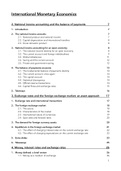Samenvatting
Samenvatting Immunologie Deeltentamen 1 - Gezondheid en Leven
- Instelling
- Vrije Universiteit Amsterdam (VU)
- Boek
- The Immune System
Deze samenvatting bevat immunologie hoorcolleges en de stof uit het boek. Met deze samenvatting heb ik een 7,3 weten te behalen.
[Meer zien]














